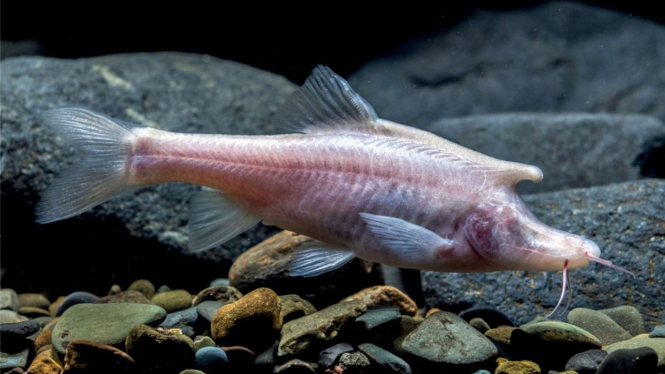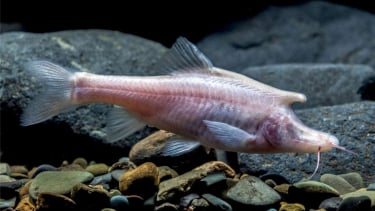Facts about New Fish Species, Has Horn-like Structure on the Head
- zookeys.pensoft.net
VIVA – A new species of horned fish with an albino body was discovered in the caves of Guizhou Province, China. The fish has the scientific name Sinocyclocheilus longicorns.
The discovery of this new species of horned fish was published in the scientific journal ZooKeys entitled "Sinocyclocheilus longicorns (Cypriniformes, Cyprinidae), a new species of microphthalmia hypogean fish from Guizhou, Southwest China."
First described in 1936, it comprises 76 valid species, of which 71 species are grouped into five species groups.
Dr. Jiang Zhou and colleagues from Guizhou Normal University, stated almost all groups of freshwater fish species live in or around caves. Most of these fish have several conditions typical of cavefish, namely, not many scales, less pigmentation, and eyes that are smaller in size.
In contrast, some species of fish also have horns on the back of their heads. But its function is not clear for what.
“The golden-line fish genus Sinocyclocheilus is endemic to China, and is mainly distributed in the karst areas of Southwest China, including Guangxi, Guizhou, Yunnan, and Hubei provinces,” they stated.
This newly discovered horned fish is characterized by an albino body, no scales, and small eyes due to degeneration. In addition, on the back of its head, there is a horn that has a single structure that is relatively long, but not branched.
From the research conducted as well as the phylogenetic tree (about the evolutionary development of living things). The researchers found that horn evolution could have occurred in at least two independent formations, a weakening event, and a loss event.
In addition, variable eye phenotypes were also found in another species, Sinocyclocheilus bicornuate. The reduced-size eyes were predicted to have occurred during evolution or were caused by an excess or reduced food source during growth, as well as gene mutations.



























